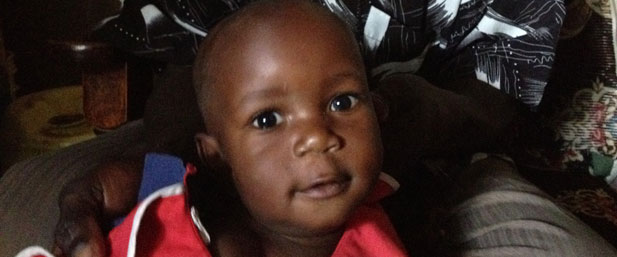
Christmas arrived nine days early for Austen Angell and Joel Newman of the Portland, Oregon design firm, Modern Edge.
That’s when Austen and Joel first saw photos of Austin Joel Oduori, born while they were doing design research on the HydroPack™ as part of a demonstration project Jan. 18-28, 2011 in the Western Kenya village of Mudimbia. Hydration Technology Innovations and the Kenya Water for Health Organization conducted the project, partially funded by Eastman.

Baby Austin’s mother, Judith, was interviewed in-depth by Modern Edge to better understand what is needed from a product like the HydroPack™ in a flooding situation. Angell asked questions about the Oduori family history, photographs and objects in the home, as well as Judith’s hopes and dreams. Newman videotaped the interviews.
Floods in early December 2011 ravaged the homes and livelihoods of some 25,000 people, leaving them homeless and scattered across 11 camps in the Mudimbia and Port Victoria areas.
In response to the flooding, Nathan Jones of Hydration Technology Innovations traveled to Kenya, arriving in Mudimbia around the same time as 13,000 HydroPacks™ donated through the contributions of Eastman employees. Eastman cellulose triacetate is the heart of the HydroPack™ membrane that blocks contaminants while it absorbs water and turns the flood waters into a safe and flavored drink.
Jones helped oversee the distribution of the HydroPacks™ and documented the experience of users, including the Oduori family.
The HydroPacks™ proved to be much easier to transport than bottled water.
“They were delivered to the camps by canoe, motorcycle and bicycle,” says Jones. “This is particularly significant because the camps were not receiving any other supplies due to lack of access by road.”
The HydroPacks™ are in high demand, according to John Kudombi, assistant chief of Lwanyange Village. “Everybody is asking for it and word is spreading quickly. Not only does it clean the water, it gives people energy which is very important right now.”
“Flooded latrines and dead animals mean the bacteria count is very high in the water,” Jones explains. “Those are difficult conditions for water filters. But the HydroPack™ is ideal for this situation because of its simplicity, high purity and ability to work in muddy water.
“The training is very short, and sufficient know-how quickly spread through the camps so we see a very high degree of proper use immediately.”
The Oduori family weathered the flood with Baby Austin finding security in a blanket his namesake gave him before leaving Kenya soon after he was born.
“We emphasized the importance of empathy in effective design research,” says Angell. “For Judith and Bonfale to name their son after me and Joel is the ultimate compliment and honor. We’re humbled, and I hope our work improves the chance for a healthier future for him as well as all the children and families in disaster prone areas.”
On seeing photos of Austin Joel for the first time, Newman commented: “Such a happy little guy. Spending time with the family there made a huge impression on my life, and I feel very lucky to be able to see him as he grows up. It’s great to know that our efforts will provide help in the flooding.”

Dr. Paul K. Carlton, Jr., director, Office of Innovations & Preparedness, Texas A&M University Health Science Center, was part of the demonstration project and is a big advocate of the HydroPack™, especially the logistical benefits it provides.
“What a gift Eastman has given the people of Mudimbia – the gift of life! Little did we know that less than one year after our trip to Mudimbia, the people would receive such a blessing as the gift of life. We, who went on the trip, now can realize how important our work was to these wonderful people.”
Article via Eastman
